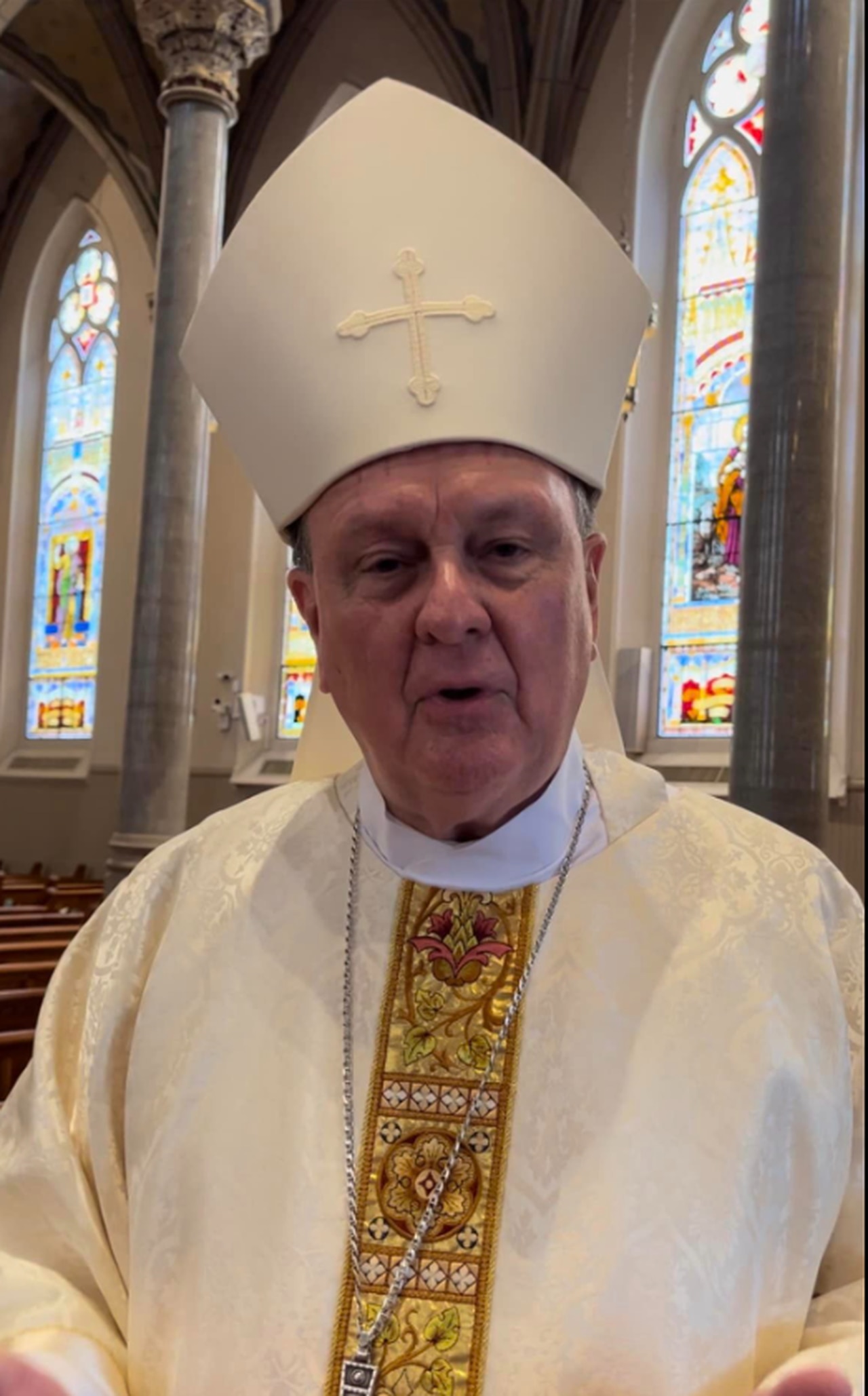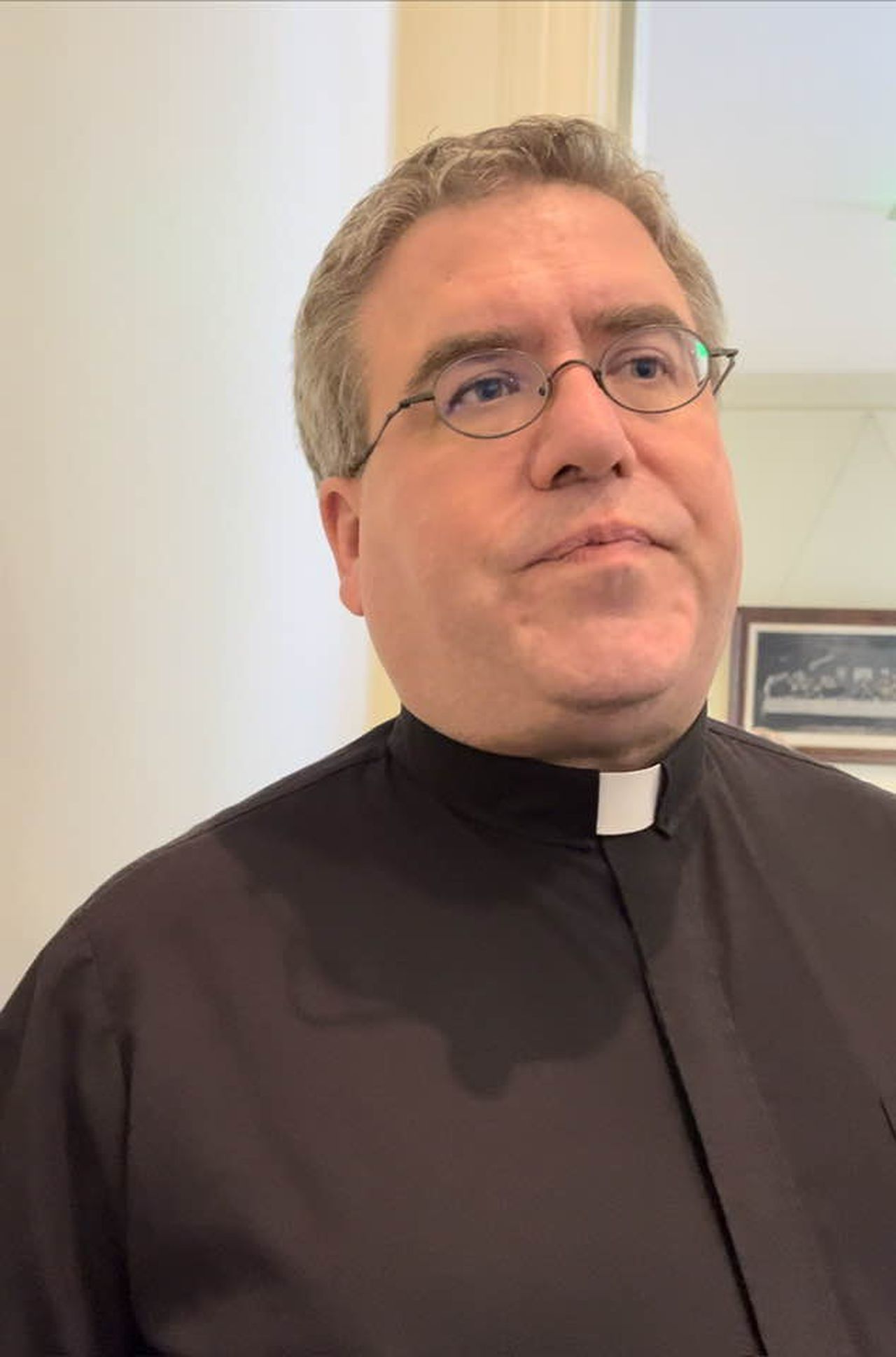Priest murdered at cathedral in Birmingham 102 years ago honored in memorial
The Cathedral of St. Paul in Birmingham held its annual memorial Mass on Friday to remember its former pastor, a priest who was killed 102 years ago near the front of the cathedral.
The memorial service was broadcast interntionally by EWTN, the Catholic network based in Irondale.
The Rev. James E. Coyle, who had been pastor of St. Paul’s Cathedral since 1904, was shot to death on the porch of the wood-frame rectory, the priest’s house next to the cathedral, on Aug. 11, 1921.
“It’s important because he’s an example of a man who loved people, who wanted all the groups of the community to come together,” said Archbishop Thomas Rodi of Mobile, who preached during the service.
The murder trial in the Coyle killing was historic, partly because of the role played by future U.S. Supreme Court Justice Hugo Black. Black defended the accused killer, the Rev. Edwin R. Stephenson, who was a member of the Ku Klux Klan. The Klan paid the legal expenses of Stephenson, who was acquitted by a jury that included several Klan members, including the jury foreman, according to Ohio State University law professor Sharon Davies, author of “Rising Road: A True Tale of Love, Race and Religion in America,” about the Coyle case.
Stephenson, who conducted weddings at the Jefferson County Courthouse, was accused of gunning down Coyle after becoming irate over Coyle’s officiating at the marriage of Stephenson’s daughter, Ruth, to a Puerto Rican, Pedro Gussman.
As defense attorney, Hugo Black had Gussman summoned into the courtroom and questioned him about his curly hair and skin color. Lights were dimmed in the courtroom so the darkness of Gussman’s complexion would be accentuated, said an Oct. 20, 1921, newspaper account of the final day of the trial. Black gained an acquittal.
Black joined the Klan 18 months after the trial, Davies said. Years later Black renounced his Klan ties and became one of the most liberal members of the U.S. Supreme Court. After the acquittal, Stephenson once again was a regular at the courthouse, conducting marriages.
Jim Pinto, author of “Killed in the Line of Duty,” has compiled contemporaneous accounts of the killing of Coyle. Coyle, a staunch defender of immigrants arriving in the area, knew there was a chance he would be killed, but sat on the porch the evening after the wedding, reading his prayer book, just as he did every night.
Coyle had already been the subject of death threats, Pinto said. “The last seven years of his life was under threat,” Pinto said. “He could have been killed at anytime.”
Pinto said that he believes Coyle should be declared an official martyr of the church.
Coyle was an outspoken opponent of the prevalent anti-Catholic bigotry in the South in the 1920s.
After his acquittal, Stephenson never reconciled with his daughter Ruth, his only child.
Gussman, the Puerto Rican man who married Ruth, was killed on Valentine’s Day 1934 in a hit-and-run accident steps away from where Coyle was killed, in front of St. Paul’s Cathedral.
Anti-Catholic bigotry that was rampant in America at the time of Coyle’s slaying, Davies said.
The state Legislature enacted the Alabama Convent Inspection law in 1919 to authorize officials without a warrant to search convents to see whether any person found inside the convent was being “involuntarily confined” or “unlawfully held,” according to Davies.
There was a fear Protestant girls would be kidnapped, forced to become Catholic nuns and held against their will, Davies said.
The Coyle case played into those fears because Ruth, as an independent-minded 18-year-old, had converted to Catholicism against the will of her father. Coyle debated those who spread the Ku Klux Klan attacks against Catholics, and federal officials at one point warned Coyle’s bishop that Coyle had been the target of death threats, Davies said.
Anti-Catholicism was a key plank of the KKK at that time. “During the early part of the 20th Century, there was quite a bit of anti-Catholicism,” said the Rev. Bryan Jerabek, the current pastor at the cathedral. “After his funeral, it began to dissipate.”
The Rev. Bryan Jerabek serves as current pastor of the Cathedral of St. Paul, where the Rev. James Coyle was pastor from 1904 until he was killed in 1921. (Photo by Greg Garrison/AL.com)
Coyle’s funeral drew thousands of mourners and was the largest the city had ever seen, Jerabek said.
The racist impulses exploited by the young defense attorney in 1921 were later curbed with the help of Supreme Court decisions in which Hugo Black played a key role, such as the 1954 Brown vs. the Board of Education of Topeka decision overturning school segregation and the 1967 Loving vs. Virginia case overturning Virginia’s ban on interracial marriage. Black served as a U.S. senator from Alabama from 1927-37, and associate justice of the U.S. Supreme Court from 1937-71.
Coyle had been an outspoken opponent of the Ku Klux Klan and an advocate of justice for all, Pinto said.
“He wanted a society that would show justice,” said Archbishop Rodi. “He reminds us that we are called in our own ways to grow in character so that we, too, will be a force for good in our community.”
A $1.5 million fundraising campaign is under way to restore the brick rectory that was built on the site of the wooden rectory where Coyle was killed, Jerabek said.
The brick rectory was meant to be a gift for Coyle on the 25th anniversary of his priesthood, he said. The congregation raised $25,000 to pay for it, the year he was killed. It was built in 1922, Jerabek said.
“It was built in his honor,” Jerabek said. “We want to continue to honor him by preserving this house.”
At 101 years old, the rectory has aged poorly, with a leaky roof and leaky windows and other structural problems, he said. The renovation will begin by the end of this year, he said.
There are plans to put a historical marker on the spot where Coyle was killed. “It’s very much part of the history of Birmingham,” Jerabek said.
Birmingham ghost tours stop in front of the cathedral at night and tell the story of Coyle’s murder, said Jerabek, who lives in the rectory. “They may think I’m a ghost,” he said.

Archbishop Thomas Rodi of Mobile spoke at the Father Coyle memorial Mass on Aug. 11, 2023, the 102nd anniversary of Coyle’s death. Coyle was shot to death on the porch of the rectory near the front of the Cathedral of St. Paul in Birmingham. (Photo by Greg Garrison/AL.com)
